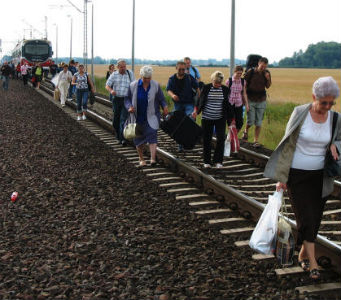While Polish authorities waste precious time trying to persuade a reluctant European Commission to approve a reallocation of 1.2 billion euros of EU Funds from rail to road, Bankwatch member group Polish Green Network argues that the government would be better advised to start investing in rail transport as soon as possible.
, | 5 April 2011

While Polish authorities waste precious time trying to persuade a reluctant European Commission to approve a reallocation of 1.2 billion euros of EU Funds from rail to road, Bankwatch member group Polish Green Network argues that the government would be better advised to start investing in rail transport as soon as possible.
The potential for rail renovation in Poland is huge. Only 37 percent of rail infrastructure in Poland is in good condition. On only 8.4 percent of rail lines in Poland can trains reach the standard European speed – 160 km/h for passenger trains and 120 km/h for cargo trains. This situation severely restricts the competitiveness of rail and, without a significant investment, passengers and freight services will continue to move away from rail.
Too many opportunities are lost in Poland because authorities have allowed the national rail network to decay. For example, the revitalisation of the route between Warsaw and Wroclaw could shorten the journey time from almost six to less than four hours. Similar results could be achieved with the revitalisation of the line between Gdask and Pozna. The estimated cost of such works is 125 million euros, which is only one tenth of what the government currently plans to take from rail.
These reversals need to stop. EU goals to reduce greenhouse gas emissions by 80 to 95 percent before 2050 cannot be achieved through reliance on road or air transport. With the Polish presidency of the EU scheduled for the second half of this year, there is no better time than now for Poland to set an example for other central and eastern European countries that also ignore the importance of rails.
The railway infrastructure in Poland is in dire need of renovation. Shifting EU funding to roads can only exacerbate the problem. The image has been taken on the line Warsaw-Wroclaw. (Original image CC 2.0 by flickr user ah&am – http://bit.ly/h6Uqcs)
Never miss an update
We expose the risks of international public finance and bring critical updates from the ground – straight to your inbox.
